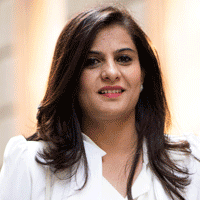Indian manufacturers digitising supply chains more seriously now
Medusa Source is a supply chain management company providing product sourcing solutions to brands, retailers, labels and wholesalers worldwide. The company's work includes identifying and evaluating factories, design and development assistance, production follow-ups, stringent quality control, logistics and shipping consolidations. Medusa Source's vendor network is spread through India, Nepal and Sri Lanka and they have over 150 suppliers and manufacturers in their matrix. Managing partners Sonal Jindal and Chetan Mathur spoke to Fibre2Fashion about the latest sourcing trends and bottlenecks affecting the apparel supply chain.
Why did you get into the apparel sourcing business? How has apparel sourcing changed in the last 10 years?
Sonal Jindal: We have been into product sourcing business for over 42 years and apparel was always on the cards. Since Indian apparel exports account for approximately $17.5 billion annually, the scale of business is there.
Who are the major investors in the company?
SJ: This is a partnership firm and both me and Chetan Mathur are managing partners and primary investors.
What are the major concerns of buyers when it comes to sourcing apparel and what concerns do manufacturers put out?
Chetan Mathur: Buyers main concerns are time to market, quality, competitive prices and now the new kid on the block is sustainability. We as a sourcing company ensure code of conduct, factory compliances, and strong quality control are in place by default. Demand concerns due to competitive markets are pushing time to market for products more than ever.
What steps do you take to ensure sustainability at each pit stop of the supply chain?
CM: We believe in five pillars of sustainable cycle in the whole supply chain: environmental protection, economical development, social well being, traceability and transparency.
Which supply chain innovations have you launched in the fashion, accessories, home decor and clothing brands? What has been planned?
SJ: We have designed customer centric end-to-end sourcing solutions for the brands that we work with for ready-to-wear fashion, accessories, footwear and home decor. These are based on complete transparency, traceability and time to market of products that we source.
How is the supply chain expected to change with increasing digitisation, artificial intelligence (AI) and virtual reality (VR)? And how is this going to impact the business of sourcing?
CM: Supply chains are becoming more transparent and accessible. We are already on a platform of cloud-based tracking systems within our organisation. New technologies like blockchain are gaining momentum and larger companies are already investing in similar technical advancements and systems. AI-based tools and equipment are being used in warehouses for swift movement and storage of merchandise. All these advancements in information technology (IT) will make the whole supply chain swift and traceable.
Technology and data are playing an increasingly important role in helping brands and manufacturers synchronise their supply chains. Are Indian manufacturers digitising supply chain speedily?
SJ: Yes, Indian industry is rapidly innovating new techniques, and this has given more access to vast product development. Investments in IT-driven tools are being adopted by Indian manufacturers more seriously than ever now.
Which brands and manufacturers avail your service?
SJ: Both high-end and affordable luxury brands, designer labels, retail chains, e-commerce companies, importers and wholesalers avail our services.
What is your USP as an apparel sourcing company?
CM: Efficiency and transparency are our USP.
What top items are exported from India, Nepal and Sri Lanka? Do you see the rise in any new categories being sourced from these regions?
CM: All kind of ready-to-wear (RTW) merchandise, including wovens, knits, leather items and accessories, are major export items from the three countries. India specialises more in value-added merchandise, special finishing techniques, natural and bio-synthetic fabrics.
What kind of impact have events like Brexit and US-China trade war had on apparel sourcing from India?
SJ: These events have emerged as a challenge for the global apparel industry. According to our experience and market knowledge, we believe such events are certainly going to benefit India compared to its peers like China and Turkey. With rising costs due to depreciating currencies in similar countries, Indian manufacturers will be able to offer more competitive prices to meet the global demand. At the same time India can become a large consumer of raw materials like fabrics and accessories from these countries for re-export.
What major bottlenecks do Indian and other South East Asian manufacturers encounter?
CM: A few bottlenecks faced by Indian and Southeast Asian manufacturers include fluctuating currency rates, multiple taxes at various stages of billing cycles, poor support by councils and governments, rise in operative costs, slowdown in global markets and political unrest.
At what stages from design to delivery do you step in to offer services?
CM: As a sourcing partner for our clients, we provide end-to-end sourcing solutions. Starting from identifying the right vendor, factory audits and compliance checks, assisting product development, order follow-ups, quality control to shipping consolidations, we are involved in the complete supply chain management cycle. (HO)

